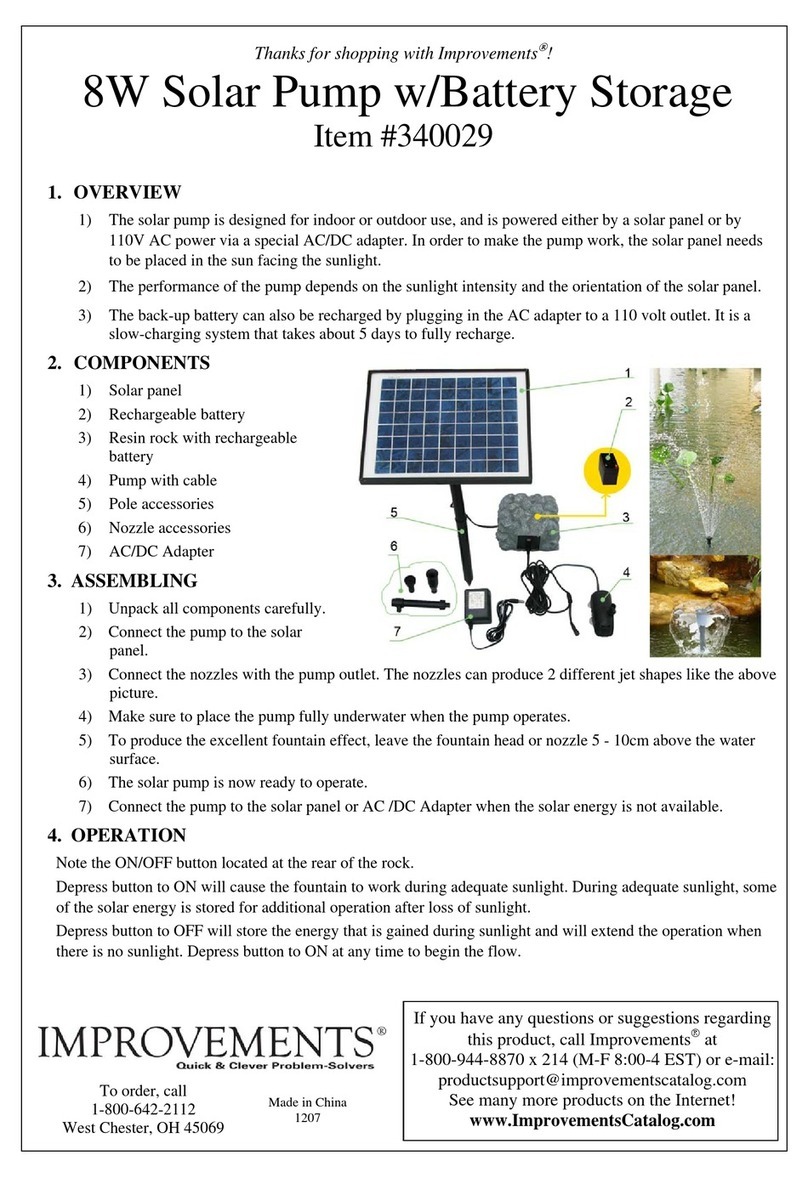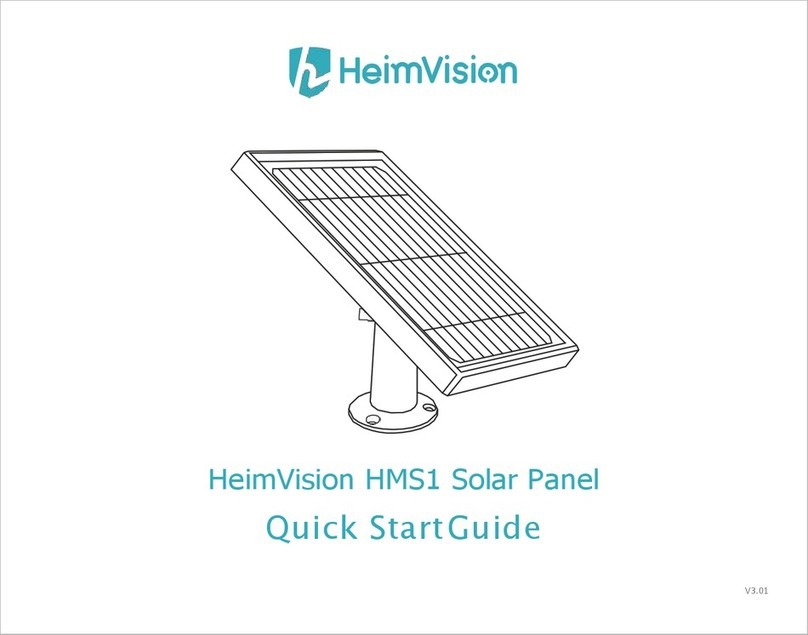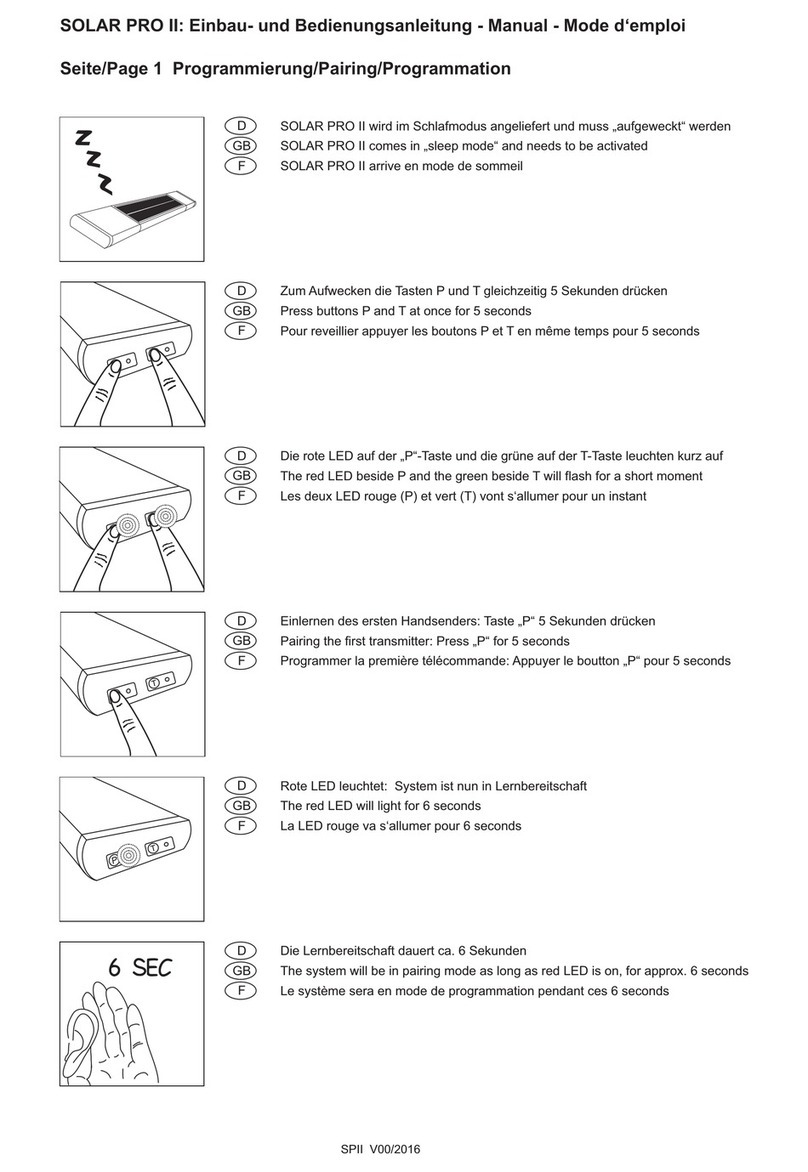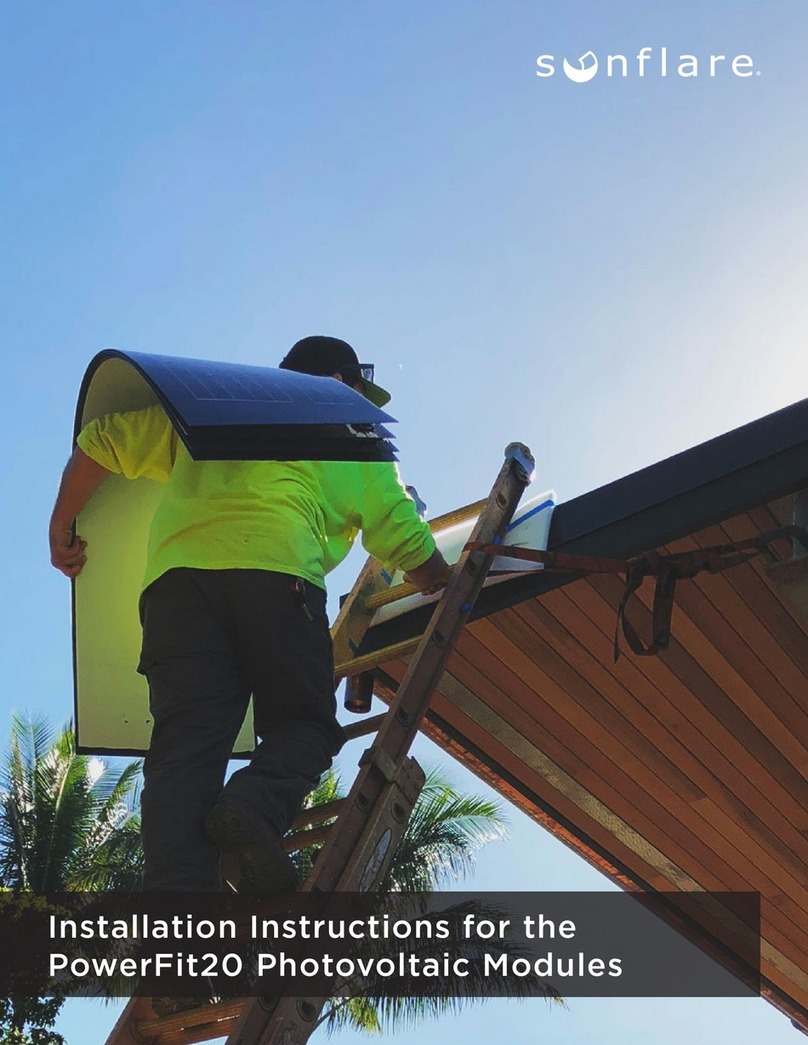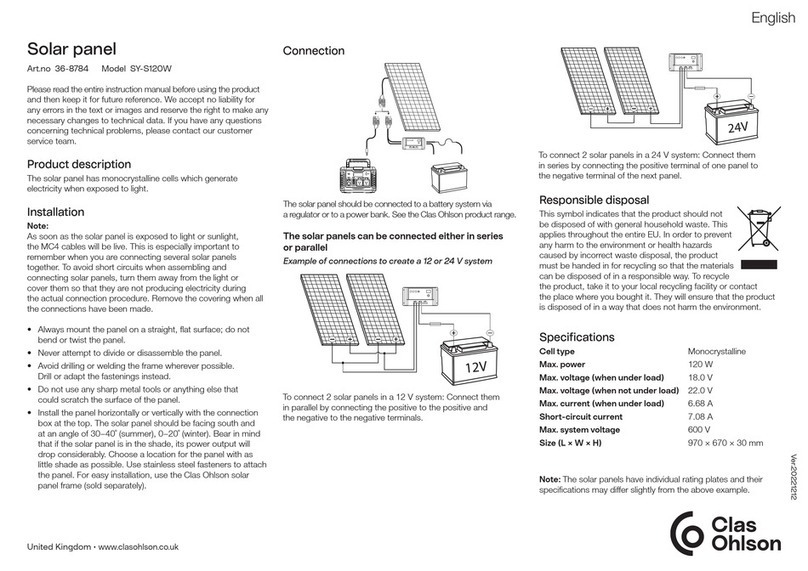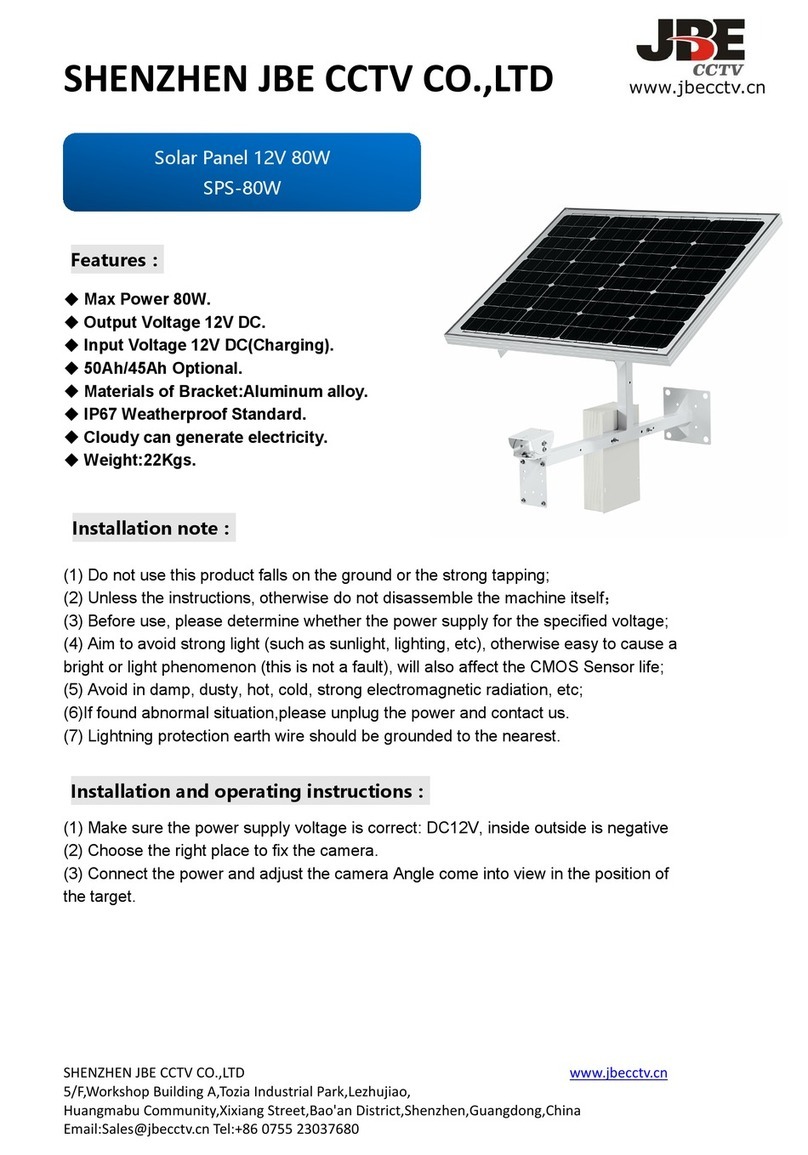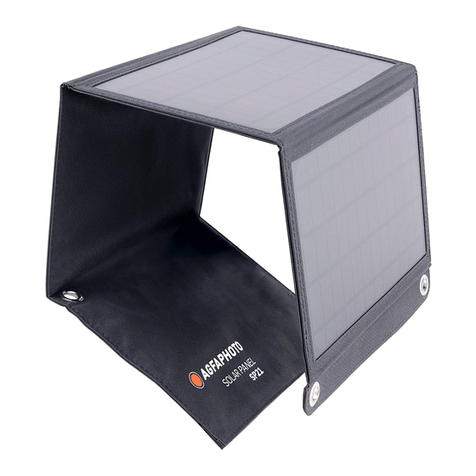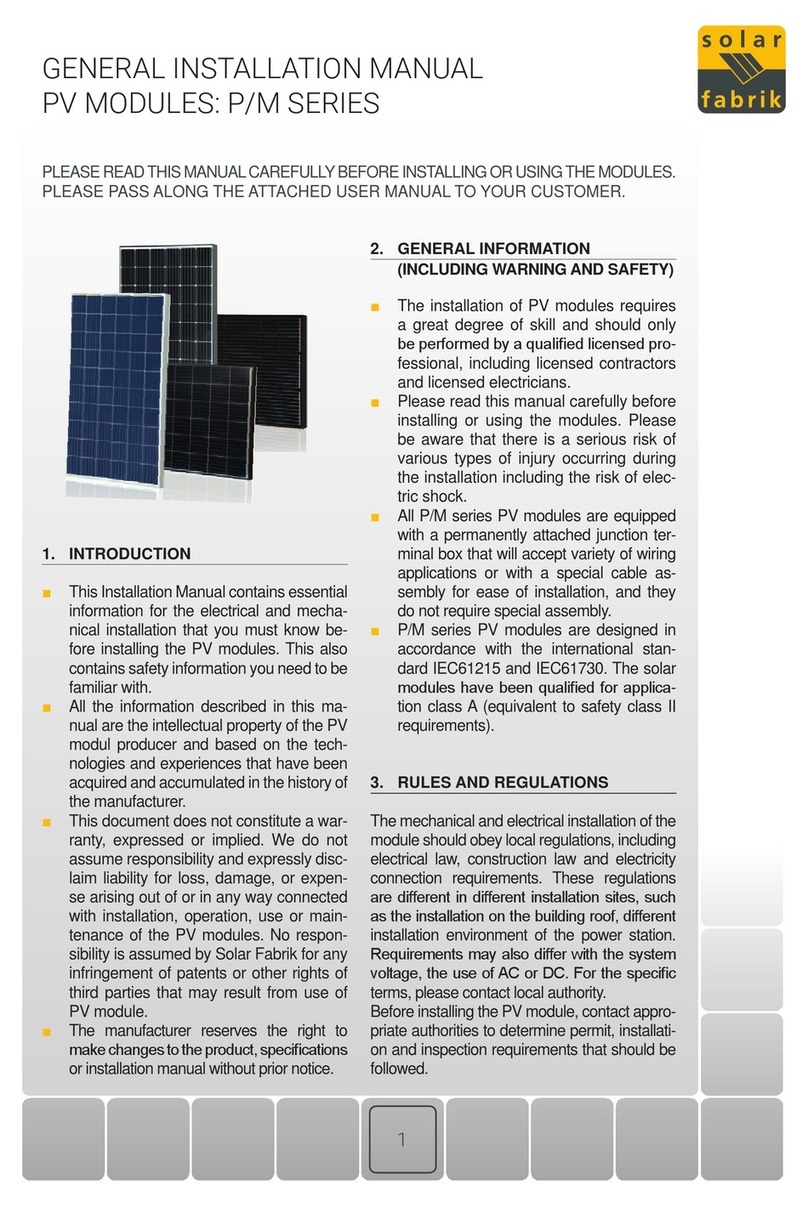Solar Roofs SkyLine 200152C80EX User manual

Wholly owned by ACR Solar International Corp.
5840 Gibbons Dr. Suite G Carmichael, CA 95608 (916) 481-7200
! "#$% ! "# & ! "#
' ( %
INSTALLATION MANUAL
August, 2005
The solar energy system described by this manual, when properly installed and maintained meets the
minimum standards established by the Solar Rating and Certification Corporation (SRCC). This
certification does not imply endorsement or warranty of this product by SRCC.
(Note: SkyLine formerly Fireball)
CONGRATULATIONS!
Thank you!
You have just purchased the most attractive and easiest to install active solar water heater
made! We have worked on every detail to assure you that SolarRoofs water heater will completely satisfy
you in its very high level of performance and dependability.
Table of Contents
SUBJECT SECTION
Tools and Materials………………………………………………………………………1.0.
Systems, Components, Options and Diagram ……………………………………..2.0.
Specifications and Schematics………………………………………………………...2.1.
Antifreeze Safety Data:……………………………………….………………………….2.1.1
Components included with system……………………………………………………2.1.2
Important Notes……………………………………………………………………………2.2.
Collector Location, Orientation and Tilt………………………………………………3.0.
Overview of the Basic Installation Steps………………………………………….….4.0.
Assembling the Collector (Split Kits Only)………………………………….……….5.0.
Collector Installation……………………………………………………………………..6.0.
Determining the Best Pipe Run…………………………………………………….…..7.0.
Making Line Connections……………………………………………………………….8.0.
Control Component Details……………………………………………………….…….9.0.
Tank Connections……………………………………………………………………….10.0.
Charging the Solar Loop……………………………………………………………….11.0
Questions and Answers………………………………………………………………..12.0.
Certifications……………………………………………………………………………..12.1.
PLEASE CALL SolarRoofs.com WITH QUESTIONS
Toll Free USA Technical Install Help Number: (888) 801-9060
NOTE: Installation Color Photo Sheets Accompany this Manual for You to Refer to.
Generally drawings or diagrams are at the end of their respective sections.
WE WELCOME YOUR COMMENTS! We have worked to make SolarRoofs installation instructions easy
and complete. We are always looking to make them better and welcome your comments and suggestions!

PLEASE READ ENTIRE MANUAL
BEFORE STARTING INSTALLATION
The system 5 can be installed in straightforward
situations by two experienced people in less than 6
hours. With no experience, the installation will
probably take 2 people 8 to 12 hours, with added
complications, like a longer pipe run or two stories,
taking longer.
SAFETY FIRST!! See section 2.2
This Installation Manual assumes good
technical experience and ability.
NOTE: The collector has some sharp metal edges and
corners, use caution when handling the collector. 1.0.
Tools and Materials
ITEMS SUPPLIED BY SOLARROOFS.COM:
• Collectors, with mounting rails, Ell brackets, U Center brackets and Solar Feed and Return line adapters
• Air Vent, Pressure Relief Valve, copper adaptor
• PV Panel with mounting brackets and hardware
• Storage Tank Heat Exchanger brass connections with Expansion tank, Pressure Gauge, “Floating Ball” Check Valve,
Charging valves, and Temperature Gauge.
• 12 Volt Pump and connections.
• 50’ 1/2” outside diameter copper solar loop lines.
• Solar loop installation parts kit including miscellaneous parts, fittings, screws, nuts, bolts, etc.,
• All hardware, two roof boots, 6'high temp. insulation
• Mixing Valve.
• Installation Manual, Operation and Maintenance Manual and Stickers.
TOOLS AND MATERIALS NEEDED:
Overview: Everyday homeowner tools are all that are needed to assemble and install the Skyline solar loop.
Tools and Materials Needed:
• For Assembling a split kit or Skyline split kit model collector: Pop Rivet Gun, 2 large adjustable wrenches and/or
wrench set (to secure collector absorber brass unions and compression fittings and to attach collector sections
together using joiner strip).
• Min 18” “Monkey Wrench (best to have 2)
• Teflon tape (1/2" wide to seal threaded fittings use 6 turns).
• Quality Pipe Sealant (to seal face of brass union ends).
• Ladder(s) (for roof and for access to attic as needed).
• Tape measure, Marking pencil, crayon or chalk (to mark rafters and holes on roof)
• Chalk Snap Line.
• 1 1/2" inch wood bit for roof penetrations (for feed and return lines through roof).
• 7/16" socket with ratchet and 6" extension. (a powerful drill with adapter is desirable for quickly driving lags).
• 1/4” nut driver on high speed drill (to drive 1/4" self taping screws into collector).
• Caulking gun with quality Polyurethane or Silicone roofing caulk (to fill lag holes and seal flashing to prevent
leaks).
• 3/4” or ½” wall, 7/8’ ID (about 12 feet) and 5/8” ID high temperature open cell pipe insulation for inside piping.
• Charging Pump and 2 buckets 3 laundry hoses to charge system with Polypropylene Glycol (usually 2 gallons 100%)

2.0.
The following Systems, Components and Options are
Wholly or Partly Covered in this Manual
Note: This manual covers 20-01 collector installation, we hope the 10-01
collector will soon be OG100 approved for use with this system
System 5. Complete 20 Square Foot (1.86 m
2
), 20” x 12’ (.508 m x 3.66 m), Solar Panels with mounting kit and
Rails, 12 Volt PV Powered Circulator + Complete Rheem Double Wall Heat Exchanger Tank Connections.
These advanced 12V PV powered systems have matched PV Panels and Pumps for best operation. 2 collector
system includes ElSid Circulator with 20 Watt PV Panel, A larger 12V Electronic Circulator and 30 Watt PV Panel
is used for 3 or 4 collectors, with 25'of wire, 50’- 1/2" OD Copper connecting line, all line connections, Collector
Air Vent and Pressure Relief Valve, 2 Temperature Gauges, Mixing Valve, Install Kit, full instructions, Owners
Manual. Includes Expansion Tank and all Connections. 81V080HE1 TANK NOT SUPPLIED.
Two Collectors, Three Collectors, Four Collectors
(double for 10-01 collectors)
:
====================================================================================================
Tilt Kit (option) Tilts collectors approximately 18 degrees from existing roof angle, Other angles available on
request. Tilt kits are used when a better winter angle is desired on a low pitch roof or to “re-orientate” panels to
face south by running the panels up and down an East or West facing roof. See Special Instructions.
Single Panel: Collector kit with 3 Modified 24” rails with 6” legs and hardware:
(Option Code /#TK01) Single panel tilt kit:
Double panels: Collector kit 3 - 4’ 1” x 1” Aluminum Rails with 12” legs and hardware:
(Option Code /#TK02) Double panel tilt kit:
Tripple panels: Collector kit 3 - 6’ 1” x 2” Alum. Rails with 24” legs and hardware:
(Option Code /#TK03) Double panel tilt kit:
Standard Color (Default): Musket Brown (C101)
Free Optional Color: Dove/Old Town (Medium) Gray (C109) - Note: This is a no cost option.
Optional Colors Include:
Colonial (light) Gray (CO102), Tahoe Blue (COl03), Colonial Red (COl04), Forest
Green (COl05), White (COl06), Buckskin Brown (CO107), Beaver (medium) Brown
(CO108), C.B. (medium) Blue (CO110), Spanish Green (CO111), Storm/Slate (dark) Gray (CO112), Royal Brown
(CO113), Ivory (CO114), Sea Blue (CO115), Leaf Green (CO116), Pebblestone Clay (CO117), Woodbeige (CO118),
Peach (great on many light orange tile roofs) (CO119), Almond (CO120), Black (CO121), Adobe Tan (CO121),
Classic Cream (CO122), Bronze (CO123), Heritage Cream (CO124), Marine Green (CO125).
Components ( for individual purchase):
MVWA, Watts Mixing Valve:
QF34, Quad Flow Diverter
TR50, 50 foot roll of 3/8" ID, 1/2" OD soft copper tubing with 2 compression unions
TC01, Taco 006 110V Circulator:
ES10, El Sid 10 Watt 12V Circulator:
HC18, March 809 18 Watt 12V Circulator
PV10, 10 Watt 12V Panel With Mounting Hardware:
PV20, 20 Watt 12V Panel With Mounting Hardware:
PV20, 30 Watt 12V Panel With Mounting Hardware:
PR15, 150 Pound Pressure Relief Valve:
CV01, Floating Ball Check Valve:
TR50, 50 foot roll of 3/8" ID, 1/2" OD soft copper tubing includes 2 compression unions:
H180,
180 F High Temperature snap switch, open 180 F, close 140 F, place on cold in:

SkyLine System 5
! " $ ! " $ ! " $
Rheem/
Rudd
80 gallon
Solar
Heat
Exchanger
storage
Loop charge valve V1
Loop charging V3
isolation valve
Loop charge drain
valve V2
Air Vent Pressure Relief Valve
PV panel
Solar Loop
Temperature
gauges
Domestic cold in
Mixing
Valve
Tank Drain
Domestic hot out
SkyLine Collectors:
40, 60, or 80 S/F
Floating
Ball
Check
valve
Tank Pressure
Temperature
Relief Valves
Switch
Cold shutoff
12 V PV pump
Expansion
Tank
Solar Loop
Pressure
Gauge
Heat Exchanger
Optional
Hot Out
Temperature
gauges

! " )( $% )( $ ) ! %) !
Rheem/
Rudd
80 gallon
Solar
Heat
Exchanger
storage
Loop charge valve V1
Loop charging V3
isolation valve
Loop charge drain
valve V2
Air Vent Pressure Relief Valve
PV panel
Solar Loop
Temperature
gauges
Existing
30 to 50
gallon gas
or electric
water
heater
Domestic cold in
Mixing
Valve
Tank Drain
Domestic hot out
Fireball 2001 Collectors
Floating
Ball
Check
valve
Tank Pressure Temperature Relief Valves
Switch
Box
Cold shutoff
12 V PV pump
Solar
Bypass
SRCC Required Solar Bypass Valves
Normal Solar Operation: A, and C are Open and B is Closed
Solar Tank bypass: A, and C are Closed and B is Open
A
C
B
Expansion
Tank
Solar Loop
Pressure
Gauge
Heat Exchanger
Hot Out
Temperature
gauges
SkyLine System 5 OG300 2 Tank Installation

2.1.
“20-01” OG300 Solar Water Heater Specifications
COLLECTOR (Panel)
Trim & Frame Materials: Finished 27 mil Aluminum Trim and Frame = Total 54 mil (1.37 mm).
Absorber Material: “Black Crystal” coated - all Copper with unions.
Glazing: .236” (6.0 mm) Twinwall Polycarbonate UV Treated
Dimension / Weight: 200 -144.3”x 20.”x 3” 38 lb (3.67 m x 0.51 m x 0.076 m 17.24 Kg) 18.4 Net s/f (1.71 m
2
)
Fluid Capacity: .3/10 gallon
Recommended Flow Rates: .20 to .35 GPM (0.946 to 1.324 L/min)
Maximum Working Pressure: 150 PSI (10.21 atm).
Maximum Stagnation Temp: 250 °F (121.11 °C).
Heat Transfer Fluid: Potable water or Propylene glycol
Standard Components: Mounting rails, mounting brackets, tech screws and lags
Color: Musket Brown (Cl01 – default color) or Dove/Old Town Gray (C109) + optional colors
PV (Photovoltaic) POWERED CIRCULATOR
PV Panel: 20 or 30 Watt, 12volt DC
Circulator: 12 Volt - “El Sid”, March or equal.
FREEZE PROTECTION
Type: Closed Loop Glycol with Storage Tank Heat Exchanger.
The SolarRoofs.com's closed loop Propylene Glycol Antifreeze heat exchange system's collector as well as feed and return
lines will not be damaged by (ambient) hard freeze temperatures as low as -54 degrees F below zero with a 60/40 mixture of
propylene glycol/water. The solar storage tank must be kept in an area above 32 degrees F.
CONNECTING LINES, INSULATION (standard)
Tubing: 1/2” (12.7 mm) OD copper - 50’ (15.24 m)
Insulation (6’ (1.83 m) supplied): 1/2” (12.7 mm) ID 1/2” (12.7 mm) or 3/4” (19.05 mm) wall
TUBING CONNECTION METHODS (standard)
Type: Brass Union, Compression, (Brass Fittings for Heat Exchanger)
STORAGE TANK - Rheem / Rudd / Richmond Model Number: 81V080HE1 (Not Supplied)
80 Gallon Tank with In Tank Double Wall Heat Exchanger.
Fluid Used: Propylene Glycol (Sierra)
Components Supplied: Expansion Tank, one floating ball check valve, Temperature Gauge,
fill, drain, and pressure relief valves.
CONTROL
Type:
12 Volt Circulator with Switch, which automatically regulates circulator operation.
Although we will make every effort to give notice, Specifications and prices subject to change without notice.
2.1.1.
Antifreeze Safety Data - Sierra Antifreeze-Coolant
FLUID HANDLING, SAFETY AND FIRST AID:
1. Store fluid in tightly closed and properly vented containers, away from heat, sparks or open flame.
Dispose of any aqueous waste at permitted landfill sites only.
2. Chemical splash goggles or full face shield must be worn when possible eye contact exists.
3. Ingestion: Give pint of luke warm water or induce vomiting if large quantity is ingested.
4. EMERGENCY PHONE: 1-800-424-9300 (CHEMTREC)
Freezing point: -28 deg F (50/50 mixture)
Flash Point: 211F
Boiling point: 365 deg F
Appearance: Green
Specific Gravity: 1.04
Vapor Density: 2.6

2.1.2.
Components Included with the SolarRoofs Type 5
PV Panel
PV Panel brackets
Bracket hardware
PV panel wire PV switch
12 Volt Pump
Tempering Valve assembly
Check valve
Dielectric Unions
Tank Nipples
Solar Loop Pressure Gauge
Expansion tank
(pre
-
charge to 38 lb.)
Expansion tank copper assembly
Pump head
with 1/2” male fitting
s
Cool feed assembly bracket
50’ Roll of 1/2 OD copper
Cool feed line
compression
union
Cool feed lower brass
assembly and temp gauge
Cool feed line
compression union
Hot return assembly with
temperature gauge an
d
check valve
Antifreeze
(not included)
Top charging fill valve V1
(with cap)
Isolation ball valve V3
Bottom charging fill valve V2
(with cap)
Cool feed tank to un
ion adaptor
3
-
1” square tube mounting rails
(2 collector system shown)
6 mounting rail brackets with
6 lags and 6 washers for every
system rail set
Collector component
Assembly:
Air vent
Pressure relief valve
Upper comp. unions 2 90s and 1
straight
Center comp
ression union body
Lower compression 90 union
Color coded bracket
“tec screws”
2 Color codes roof boots
3 Collector U clips
(per extra collector)
System documents and
lab
els
Mixing valve only included with kit, assembly is
included in picture to illustrate complete assembly
or Coin Vent
Pl
ease Note:
SolarRoofs has improved its system and some pictures will not be visually
accurate but show all the components included. Most copper fittings have been replaced
with Brass. More visually accurate pictures will be included in their sections.

2.2.
IMPORTANT NOTES:
CHECK WITH YOUR LOCAL BUILDING DEPARTMENT FOR CODE
COMPLIANCE FOR THE INSTALLATION OF YOUR SOLAR WATER
HEATING SYSTEM.
SAFETY FIRST!!
USE CAUTION!!! Do not attempt to self-install without
help if you have ANY back or physical limitations!!!
GENERAL WARNINGS:
This manual assumes that the installer has good mechanical experience and
can confidently use simple hand tools, building materials and adhere to safe
building practices.
SolarRoofs.com does not assume responsibility for any loss, or injury
directly or indirectly, associated with the installation of this system.
Do not install this system alone wwithout someone knowing where you are
and what you are doing at all times.
In all cases where a firewall (drywall) is penetrated, it is important to seal the
hole. A good general rule is to always fill in and seal around all holes made
for solar lines to prevent heat loss and to maintain fire stops.
Properly support all piping according to local code. As a rule, support
copper pipe every 6’.
SolarRoofs systems are easy to install; however, problems resulting from a
failure to correctly install the system according to the following instructions
and to maintain it according to the operation and maintenance manual are
not covered by the warranty.

3.0.
COLLECTOR LOCATION, ORIENTATION AND TILT
Your solar water system will be providing savings for
your family for decades to come. Because the sun rises
in the east, crosses over the horizon on the south and
sets in the west, you want your collector to face as much
to the south as possible. Your system needs the most
sun it can get!
As long as the collector angle (known as tilt) is at least
14 degrees up from horizontal, (a typical roof angle is
22 to 28 degrees) additional tilt usually has little effect
on total year round performance. The exception is in
areas with very sunny winters (as in most areas of
Colorado) where a higher angle, (facing the collector
more directly into the winter sun) can help year round
performance.
In most areas with heavy winter overcast, a solar
collector's orientation on a low pitched roof can face
anywhere from 45 degrees east to west of south without
losing more than 8% of the energy it would have
produced if it were facing directly south. At 90 degrees
east to west of south the loss is closer to 20%.
Exceptions include easterly facing systems in areas
with a lot of morning fog and clear afternoons where
south facing or west facing would be much better. The
opposite can be true if sunny mornings are very often
followed by rainy afternoons.
Take these facts into consideration when locating
your collector and consult with us if you have any
questions.
ROOF CONDITION:
The condition of your roof should be good although one
of the features of Skyline system is that removing and
replacing the collector is relatively easy for re-roofing.

4.0.
OVERVIEW - THE BASIC
INSTALLATION STEPS:
THE BASIC INSTALLATION STEPS (3 to 8
hours required to install, depending on situation and
experience)
1. Unpack collector, for split kits, assemble the
collector left and right sections into one unit as per
pictures and instructions. Note: not shown, the 24’
collector has a center mullion that needs to be attached
to the collector after joining the unions. Two 6’ sheets
of Polycarbonate glazing go into each side of it.
2. Collector placement on roof located, rafters located
and marked, end mounting rails with brackets lagged
and sealed into rafters, collector placed into mounting
rail brackets, center mounting rail and brackets placed,
lagged and sealed into rafter, mounting rail brackets
screwed into collector.
3. Collector compression unions connecting air vent,
pressure relief valve and components installed, two 1
1/2" holes drilled into roof for hot feed and cool return
lines. Shingles trimmed and "Roof Boots" installed
under shingles and into holes. PV panel installed.
4.Collector cool feed (bottom compression union) and
hot return lines (top compression union) installed
through roof boots to tank area. PV wire connected
and run to water heater area. Insulation partly installed
before tubing connections are made. PV panel
installed.
5. Water Heater Element turned off, water drained,
lower drain removed, Rheem 80 gallon Heat
Exchanger tank installed with Mixing Valve. Water
lines connected including installation of the Mixing
valve. Brass Solar lines with valves connected to heat
exchanger top and bottom. Pump, pressure gauge and
expansion tank installed. Collector cool feed (from
pump) and hot return lines connected by compression
union.
6. Water heater refilled, solar loop purged of air,
pump wired to PV panel. Glycol loop filled, finish
insulating lines, Fill Tank, Element turned back on.
5.0.
ASSEMBLING THE COLLECTOR
(See Supplemental “Split Kit” Addendum)
COLLECTOR INSTALLATION 6.0.
BE SECURE AND USE CARE!!!
Good procedure suggests that you always secure your
ladder to the gutter so it does not slip. Place blocks in the
gutter so the weight of the ladder does not crush the gutter.
Protect the surface of the gutter with a cloth to prevent
marks.
WALKING ON THE ROOF:
Use soft sole shoes. Walk in the center of the shingle to
prevent knocking off the brittle ends of the shingles. This
care will keep the roof in good condition and prevent
dangerous ball bearing like gravel and tar balls from
making the roof treacherous.
Know how to walk on your roof if it is a special type such
as Tile or Metal, ask your roofer or ask us. For example,
stepping in the center of most Tile roof shingles will break
them.
Always put your weight on the last two (overlapping)
inches of the tile and away from the side that overlaps the
next tile (to avoid chipping off the delicate vertical overlap
strip).
On some shingles, such as “Fire-Free”, or shake, more
damage is done stepping on the end than in stepping on the
center. Shake roofs are usually easy to walk on but use
care on shake roofs to not crack or break off brittle shakes.
Shake roofs, as well as most roofs, can be treacherous
when wet.
As the 20-01 collector is 12’ long, it is important to place
the line connection end so it is the shortest distance from
the storage tank.
The collector can be flipped either way to be closest to
your storage area. Remember that the feed line from the
pump goes to the bottom collector connection and the hot
return goes to the top collector connection as shown in the
diagrams.
On an average, low pitch single story roof, one able person
can safely install the Skyline collector. Do not install this
system alone, be sure someone knows where you are
and what you are doing at all times.
The 20-01 collector is 12 feet long, only 20 inches wide
and under 38 pounds, making it an ideal size and weight
for one person to lean against the roof or gutter, go up the
ladder and simply pick up the collector and pull up onto
the roof.

Collector installation Components:
Note 10-01 collectors will have 2 sets of collector brackets instead of 3
It is important to not over-
tighten these fittings.
Spraying a little silicone on
the threads is helpful.
A couple of turns of Teflon
tape around the ring helps
make sealing easier.
½’ OD Compression
Union and Ell
Compression Ell
Nut with Ring Inside
Tube
must extend beyond ring
about
¼” and bottom out inside the
compression
body
before tightening
nut
Nut, Ring, Union Body
PV Parts Bag contains PV
switch Brackets and
hardware. See 9.0,
Control Component
Detail.
Roof Kit contains:
Mounting Ells and washers,
3.5 or 4” Lags,
Center U Brackets for 2 or
more collectors,
Color coded Tec Screws for
securing Ell brackets and U
brackets to collector,
Low profile Roof Boots.
Plumbing Kit:
50’ of ½” OD Copper,
Pressure Relief,
Coin (air) vent,
Soldered adaptor,
Compression fittings,
1 Compression union
body per extra
collector,
2 compression unions
to connect tubing to
tank.
Important Instructions Regarding Installing Compression Unions

Collectors mount horizontally and Collector Mounting Rails go as shown below.
Two Collector 20-01 Top View
(10-01 collectors use 2 rails about 1’ in from the ends)
The Diagram above is a top view of two collectors installed together showing:
1. Two 20" x 12'Collectors mounted with connections to the right.
2. The Mounting Rails with Mounting Brackets (3 rails and 6 Mounting Brackets plus 3 Quick Connect Clips (QCC)
per additional collector set (6.), 3 two panel rails, 6 Mounting Brackets and 3 QCCs shown in this diagram).
2A. Mounting Rail Lag holes top and bottom.
3. The "Hot Out" Collector connection going to the storage tank.
4. The between Collector connection.
5. The "Cold In" Collector connection from the storage tank.
6. The Quick Connect Clip bolts to the mounting rail here with the tabs overlapping the top of the collector.
7. Collector Glazing (Lexan)
8. Collector trim sections.
2
7
8
3
4
5
6
1
1
2A
Above: Allowing from 14” to 2’ for collector overhang, find and mark Rafters for the Three Collector Rails,
(shown in this picture are 3 rails for 3 collectors) Use a chalk line to get the 3 rails even at the bottom. Get the
center rail as close to center between the end rails as possible. Using a hammer to “Sound Out” the rafters
usually finds the rafters. If not, use a feeler bit (long small drill) to drill through the roof from the inside, just
beside the rafter. Be sure to squeeze calk into all holes to seal them!
Pre-Drill the bottom holes for the 2 end rails (which will be about 8’ apart – you can use the lag itself to “pre
drill”), squeeze Caulk into Lag Hole, Place end mounting rail with mounting bracket and washer over hole
(above left). Drive Lags into holes but do not tighten. Carefully place the center rail along the chalk line, repeat
the proceedure for the end rails. Install the upper lags using the same proceedure. Note: )ne and two collector
systems have lags at the top and bottom of the rails. Three and four collectors use a center lag at the center of
the end rails only. Other Quick connect clips use a carrage bolt.

2001 Side View
The above Diagram shows a side view of the Collector installed on the roof and shows:
(Refer to Color Pictures for Details of Ell Brackets)
1. Side view of a Collector.
2. Mounting Rails (3 per 20-01 collector).
2A. Mounting Rail Lag.
2B. Roof sheathing.
2C. Roof Rafter.
3. Collector feed or return connection.
8. Collector Trim.
LAGS AND RAFTERS:
For maximum strength, you want your mounting rail (2) lags (2A) to go into rafters. After locating the best area for
the collector, “sound out” the roof for the rafters with a hammer and mark the rafter centers with chalk. On thick roofs,
such as shake, you may need to drill a small hole from the underside of the roof next to the rafter to locate it from the
roof and use measurements from thereon. On thin composition roofs, a good stud finder can be very helpful in finding
the center of the studs.
It is best to “run the lag into the roof once, remove it, then fill the hole with caulk and run the lag with washer
back in and tighten.
Some installers like to pre-drill the hole with a smaller bit than the lag to prevent cracking shake shingles.
The Easy Way, (avoids having to locate rafters):
In areas with average wind conditions, (Highest winds
up to 75 MPH) the light weight of the collector allows
you to use “Hollow Wall Expanding Anchors.”
If using this method, be sure to use the ¼” size bolt.
Drill a ½’ hole through the sheathing to allow for the
thickness of the anchor. Place the anchor in the hole,
pull the nut end up, using the supplied ¼” bolt, until it
is tight, but do not over tighten!
Expanding Anchor Tile Roof Installations: (be
prepared to get longer ¼ / 20 bolts)
NOTE: Correct placement of the collectors on tile is
very important. Look for the best locations for the rails
so the collector will not bottom out or “Rock.” Do not
drill through 2 tiles and do not drill to close to the edge
to prevent cracking.
Holes drilled about 3” – 4” in from the end of the tile
are usually the best locations. This allows the hole to
be only through one tile and closer to the stronger
overlap. Relocate holes in the rail as needed. The
collector can go over lag heads in the rail.
The expanding anchor can make tile roof installations
much easier. On flat tile, a spanner tube usually is not
needed, just be sure to not over tighten the anchor bolt.
On barrel tile, make a spanner tube out of ½” conduit,
copper tube or other sturdy material, drill a hole just
large enough to fit the tube through the tile, with it
sticking up about ¼” when seated on the Anchor base.
Drill a ½” hole through the sheathing (if you happen to
hit a rafter, use a lag). Lift up the end of the tile and
place the anchor in the hole and tighten to seat it
securely in place.
1
8
3
2B2A 2C
2
Hollow Wall
Expanding Anchor

GETTING THE COLLECTOR ONTO THE
ROOF:
Use wisdom, when pulling collectors up onto the roof,
have the collector at a good angle to the roof (out at the
bottom). Protecting the gutter with a heavy cloth may be
a good idea. Do not lean over the edge of the roof at all,
simply pull and leverage the collector up onto the roof.
The assembled collector is very sturdy but avoid
“twisting” it.
If the edge of the roof is over 10 feet from the ground, the
bottom of the collector may be placed on a sturdy object
or someone may be needed to boost the collector up to
you.
On two story houses we strongly recommend two
people for safety.
A sling can be made with sturdy rope going all the way
around the bottom of the collector with shorter pieces
going around the collector to secure the rope in place. Be
sure to secure it very well and always have a secure safety
rope you can grab onto. Have the second person push
the collector up the ladder while it is pulled at the top.
Protect Edge of Roof with a Tarp
and Lean Collector Against Roof
Keeping your body weight over
the Roof, pull the Collector Up
Move Up the Roof as you Pull
the Collector Up a Foot or so at a
Time.
Balance the Collector in
the Center and Carry to
Installation Area.
Mounting
Rail
Ell Bracket

A NOTE ON MAKING TUBE
CONNECTIONS:
The tube connections top and bottom shown in top
view as 3 & 5, are made at the top and bottom of ONE
end of the collector. The connections can be at either
end of the collector simply by placing the collector
end left or right. When two or more collectors are
used they also connect at the same end (4).
Make sure you do not have a rafter
directly under the collector feed as the
feed hole is 1 and ½ inches below and in
from the end of the collector.
MOUNTING RAIL AND MOUNTING
BRACKET INSTALLATION STARTING
WITH SINGLE COLLECTOR:
A single 20-01 collector is attached to the roof by
three "mounting rails and 6 mounting Ell brackets"
(2).
Position the Ell bracket
between the
trim and frame so it is CENTERED
over the Lag hole.
Install the collector
onto the rails with the mounting bracket tab
UNDER the trim and BETWEEN the frame.
The small bend at the bottom of the trim makes
inserting the mounting bracket easy. Be sure to
press the collector all the way down on the
mounting rail and secure with two 1/4” color
coded self tap screws evenly just above the
small bend in the trim.
Be sure to catch the tab
with both screws!
Above: Complete Collector mounting kit
for 2 collectors. 3 Ell brackets bottom,
three U bracket sets per additional
collector and 3 Ell brackets top.
Note: 10
-01 collector has 2 sets of each.
Above: Top Ell Bracket in place and
ready for top collector to be installed.

Two, Three and Four Panel Mounting Rails and
Tilt Kit (two collector maximum per tilt kit):
For installing two to four collectors or when two
collectors are installed on the optional tilt rack, a
special Quick Mount clip (6) is used between the
collectors to firmly hold them onto the mounting rail.
All holes are predrilled. With a tilt kit sets of 1/4"
nuts, bolts and washers are supplied as needed in
addition to lags to bolt the tilt kit together and secure
the angle brackets.
The Quick Mount clip allows mounting of two
collectors on the two panel-mounting rail or the
heavy-duty tilt rail without needing to screw a
mounting bracket tab into the side of the collector.
The U shaped clip with outward tabs that go over the
edge of the two collectors is secured with a bolt in the
center. In high wind areas, it is recommended that the
clips be Tec screwed into the frame through the
glazing with 2 screws.
Notes on Two, Three and Four Collector Flush
Mount Installations:
Place the first collector in place with mounting
bracket tabs inserted for final assembly. Tighten
down the lags. Place three Quick Mount clips in place
over their rail lag hole locations. Partially install the
lags to hold the clips loosely in place. (you will need
an extension to your lag driver to get between the
collectors). Slip the next collector under the clips,
connect the compression unions (4) so alignment is
assured and then tighten down the lags. Repeat until
all collectors are installed.
Quick Connect Clips
(QCC’s) are supplied
in One or Two pieces
with the single piece
shown. Shown, in the
top right above, laid
out as to how they will
go and individually to
the left next to the rail
with carriage bolt.
It is
easiest to remove the
nu
t before placing the
collectors on the rails.
Being sure the trim is pushed in, secure the U
bracket at the top on both sides with 2 tec screws
going through the bracket, trim and glazing. This
makes a very strong connection.
Line up the collectors so the center union body
can be installed. Secure the nut to the outside
while it is still on the ground so it is not “lost”
inside the collector.

FLASHING IN UNDER SHINGLES
For Tile and other roofs, consult with the Factory.
For Composition and Cedar Shake Installation:
ACRSI supplies two special roof “Flashings” which
are used to make a waterproof seal for the solar
collector feed and return lines. These flashings easily
slip under a composition or shake shingle with
minimum cutting.
The tubing hole is large enough for the 1/2” od copper
pipe to easily slip through and the small space left can
be easily sealed with caulk and further covered with
insulation. The base of the flashing can flex and be
moved in different directions.
The 6” aluminum base is usually large enough to
make a watertight seal and can easily be flashed over
by a larger aluminum sheet when needed. It is
recommended that a 1 ½” hole be drilled for the
tubing hole.
“Roof Boot” Flashing and Waterproofing Details
The 2 aluminum flashings supplied with the system
are easily installed but require careful alignment to
assure a good fit. It is recommended that up to a 1½ “
hole be drilled to give “working room” when
installing the roof boot. Spacers are included with
flush kits to make boot installation easier. Pre-fit
roof connections prior to drilling (see Section 8, top
and bottom connections).
NOTE: sound out your roof to be sure no rafters
are under where holes will need to be drilled!
Preposition the roof boot where it will go when the
pipes are connected to the compression 90 in its final
“out” position. Mark the center of the hole, remove
the fitting and place out of the way. Using a 1 ½”
hole saw or paddle bit, drill the hole. Carefully pry up
the shingle and slip the Roof Boot under the shingle
so water will freely flow over the roof boot.
If needed, add aluminum flashing to assure a
watertight installation (especially needed with Cedar
Shake). Caulk the sides as needed and it is good to
put two roofing nails in the bottom of the boot to
secure it AFTER the pipes are installed and fully
secured.
Roofing nails
(last)
Roof Boot Hole Cut in shingle Roof Boot Flashing under shingle
Note that Roof Boot is UNDER the shingles at the top and most of the sides so water flows over the top.
The shingle is cut down from where the hole is drilled.
Drill a 1 ½” hole 1 ½” in and centered
2” below the edge of the collector.
Slip flashing under shingles.
Use a “lifting Tool” with smooth edges to go
under and lift the shingle without cutting it.
Lift shingles before installing collectors.
Properly placed, the feed line is right
above the flashing tube hole.
The edge of the collector is 1 ½” above
the lower edge of the rails.

SC01 Stacked Array Installation Kit
Loosely assemble your kit, per the following pictures, to locate the exact location of your
roof penetrations and then follow the flashing and roof boot installation instructions.
Feed Ell from Pump
SC01 - Stacked Collector
Array Installation Kit
Pre-soldered adaptor for
Pressure Relief Valve
and Coin Vent
Coin Vent
2” stick of ½” OD copper
Assembled SC01
Stacked Collector
Array
1 compression Ell for the feed. Bottom Roof “Boot”
Top roof “Boot”
150 Lb
pressure relief
valve
(PRV)
1 compression
TEE, to collector
1 compression
Ell for the
Collector Hot
Return
One union body
is supplied per
additional
system
collector.
IMPORTANT:
Be sure the
union body is
fully in place
before
tightening any
Lags, Bolts or
Tec screws.
Solar Hot
Return to
Tank

The SSC1 is the same as SC01 with addition of a
Tee and 2” stick of copper for 2
nd
collector.
IMPORTANT SSC1 TIP:
Before installing the last Left collector, lift shingle for
the flashing to go under See: “Roof Boot” Flashing and Waterproofing Details.
SSC1 Side by Side Collector Installation Kit
The SSC1 Feed has an
additional Ell,
2 copper sticks
and a
Tee for the second collector.

7.0.
DETERMINE THE BEST PIPE RUN
COORDINATE THE PIPE RUN WITH THE BEST SOUTH FACING COLLECTOR LOCATION
FOR THE SHORTEST RUN.
IMPORTANT: SLOPE all lines to DRAIN! It is important that all pipes between the collectors maintain a 1/4"
per foot drop to prevent traps and assure that all fluid drains when the drain valves are opened.
COMMON RUNS
In many one-story homes, the run is a simple matter of
going up into the garage rafter area and to the roof or
going through a wall or ceiling into the attic.
Common pipe runs to the basement include runs adjacent
to air return chases, plumbing and vent lines and through
closets. In a two story house runs can be challenging;
however, it is amazing how often a good solution is at
hand.
CHASES: Look for pipe, fireplace and duct chases with
room around them. The pipes can often be dropped
down next to a duct, especially in a one-story house, in
just a few minutes.
CLOSETS: Sometimes the easiest way to run the pipes
is through closets (look for "stacked" closets in a two-
story house). Since 1/2” copper pipes are fairly flexible,
drilling through even many shelves with an angle drill is
easy as alignment does not have to be precise.
NOTE: Copper pipes get harder, even brittle with
multiple bending, bend your pipe as little as possible
for the easiest installation! Unroll the soft copper in
smooth even strokes and be sure the connections for
the collector are above the roofline so no water could
get into the house if the connection leaks.
DRYWALL: It is sometimes necessary to cut drywall
at the floor or ceiling level in order to cut the holes in a
fire stop. Usually this hole can be made out of sight in a
closet. After sealing the fire-stop, it may be desirable to
make the remaining drywall removable by putting a
simple frame around it and placing it back in place with
a few finish nails.
INFILTRATION AND FIRE STOPS: In all
situations, remember that infiltration is one of the main
sources of energy loss in a house. In no way should the
installation of a solar system contribute to this loss!
ALWAYS seal up any holes made in the house envelope
especially in the attic and fire stops. Fire stops must be
properly put back in place so their important function is
preserved. Converting to copper pipe for two feet on
either side of the firestop may be required in some areas.
STORAGE: You will need to purchase a ‘Rheem
Storage Tank, 80 Gallon with heat exchanger, Model #
RH-81V080HE1.
You will need room to work around it and space for the
solar hardware, usually a foot on the drain side of the
heater is adequate. Install the tank connection
components.
The Rheem Storage Tank is equipped with a top element
only. To enhance your DHW efficiency, during the
winter, first try using low flow showerheads and aerators
and/or add a 220v switch to the top element. Another
good plan is to use a 220v timer set to heat the water for
two hours before you get up in the morning and for two
hours before you get home from work.
Try turning the power off during sunny summer days.
You should have ample Hot water with 2 panel for a
family of 3 and with 3 panels for a family of 4 or 5 on
clear summer days.
INSULATION: INSULATION OF EXPOSED
COPPER PIPES IS NEEDED. A MINIMUM 1/2"
R-2.6 (closed-cell insulation)* IS NEEDED AND 3/4”
R-4.5 OR BETTER IS RECOMMENDED. Check your
state and local codes to see if any greater thickness is
required ESPECIALLY IF REBATES OR
INCENTIVES ARE INVOLVED.
This manual suits for next models
2
Table of contents
Popular Solar Panel manuals by other brands
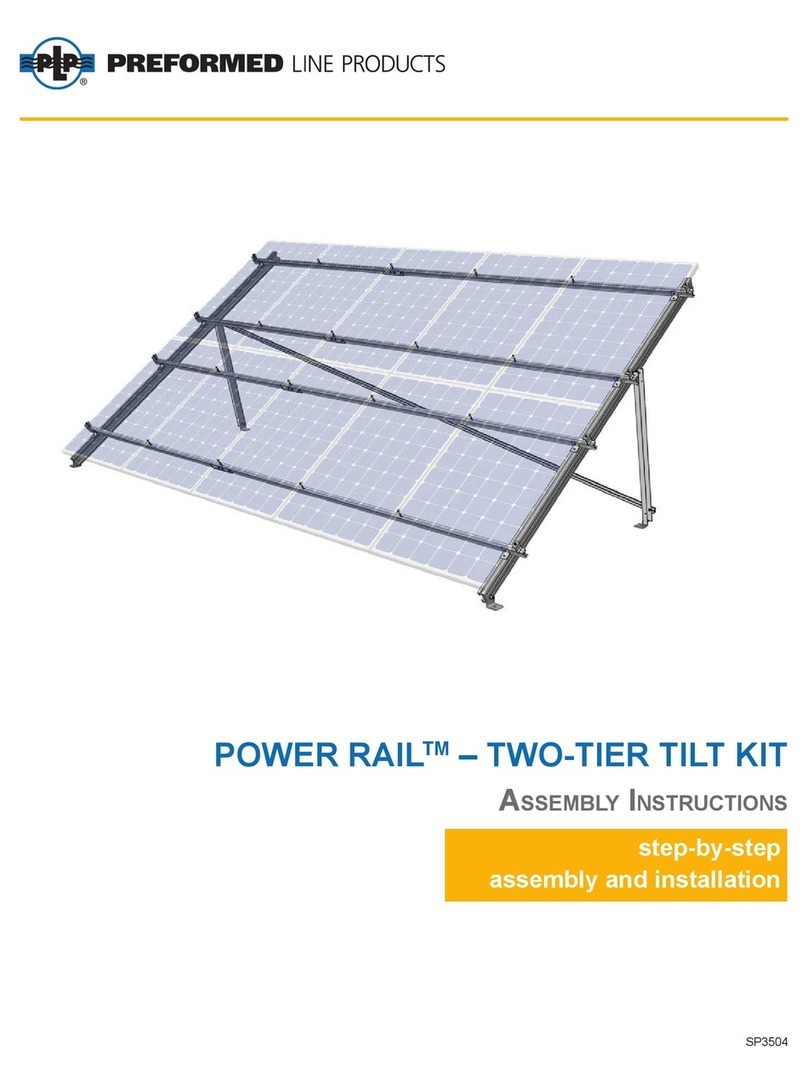
PREFORMED LINE PRODUCTS
PREFORMED LINE PRODUCTS POWER RAIL 60 Cell Assembly instructions

REC
REC REC265 Series installation manual
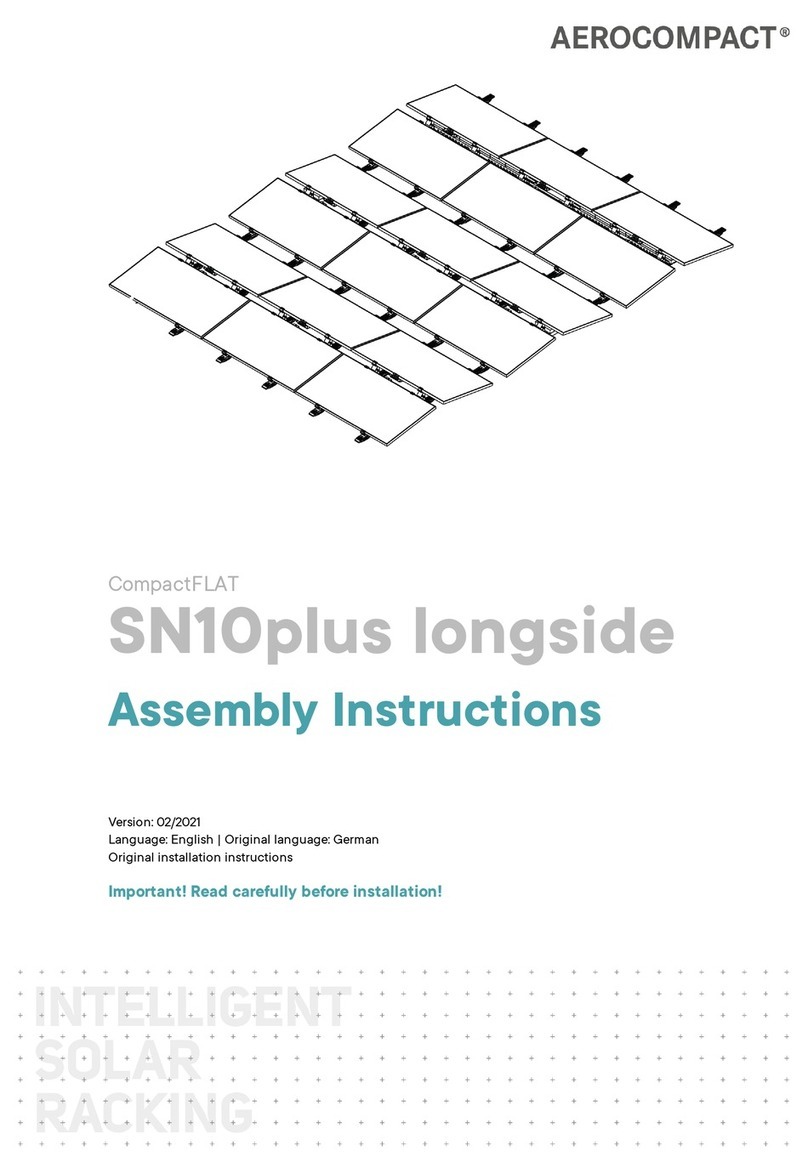
AEROCOMPACT
AEROCOMPACT CompactFLAT SN10plus Assembly instructions

Kyocera
Kyocera KK Series Assembly and maintenance instructions
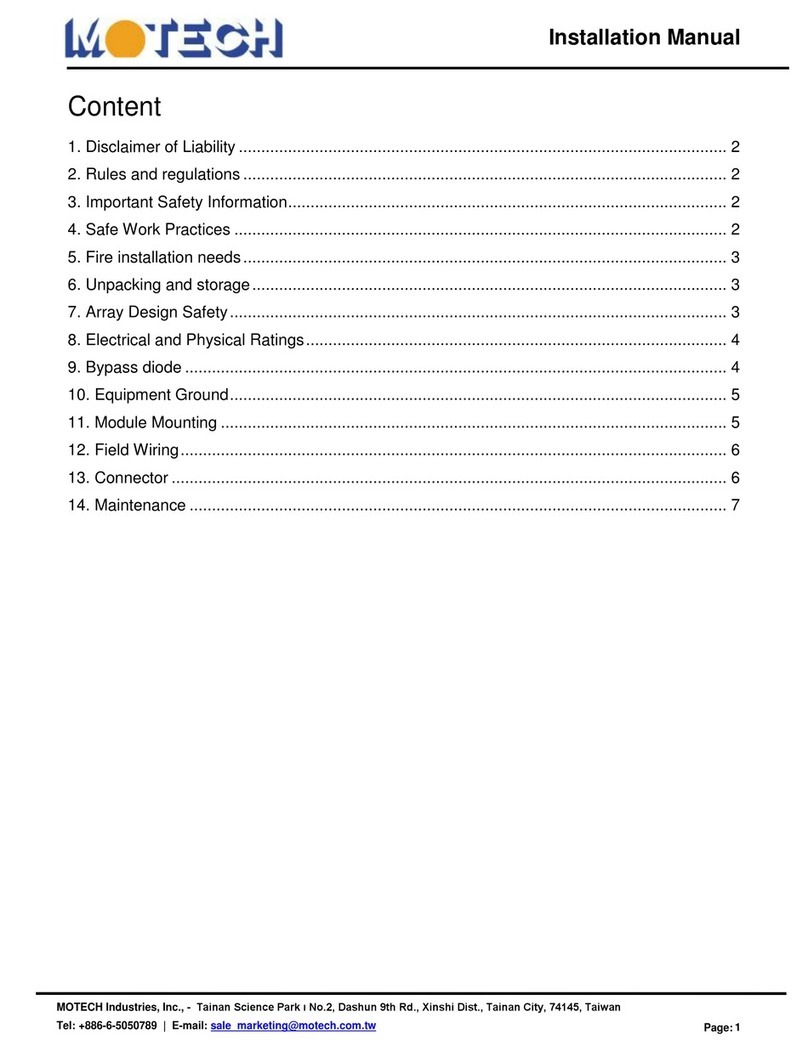
Motech
Motech XS60GB-315 installation manual

Sharp
Sharp ND-255QCS Installation and user manual

